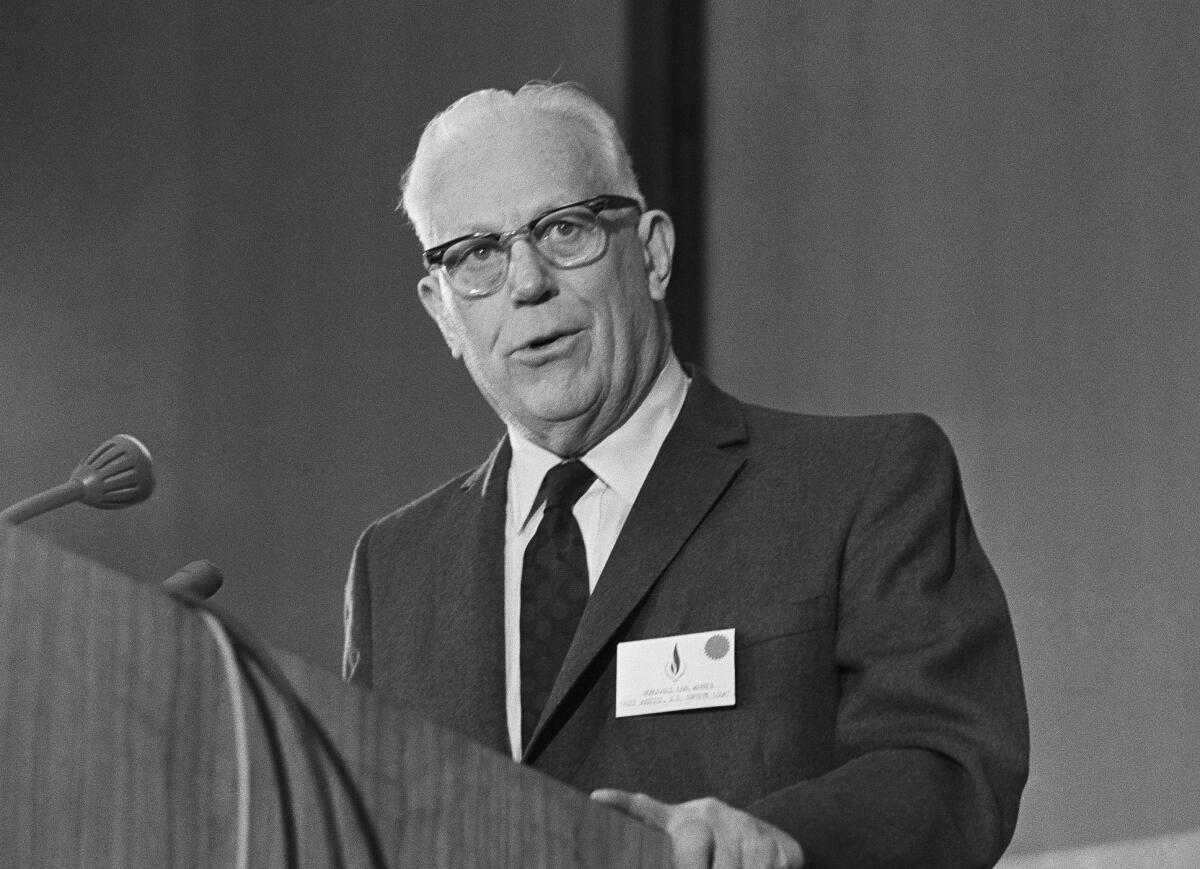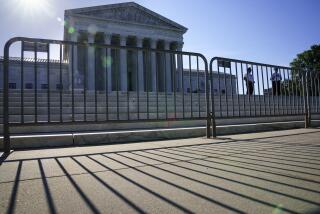Op-Ed: Why Biden should look beyond the judiciary for his Supreme Court nominee

- Share via
When Earl Warren became chief justice of the Supreme Court in 1953, only one of the nine justices had served as a judge before joining the court. After the landmark court ruling the next year that ended segregation, court detractors masked their resentment of Brown vs. Board of Education with a patina of legitimacy: They painted Warren, a former prosecutor and three-term governor from California, as the embodiment of an untrained politician masked in judicial robes.
Experienced judges adhering to well-established precedents, they asserted, would have never overruled Plessy vs. Ferguson, the 1896 case establishing the “separate but equal” doctrine. Pointing to this lack of judicial experience as the reason for the justices’ flawed decision-making, Senate Judiciary Committee Chairman James Eastland complained to Sen. Joe McCarthy: “We have politicians instead of lawyers on the court.”
The insistence by rivals of the Warren court on appointing justices with judicial experience eventually became the norm. The record bears this out: All but one of the last 16 justices had been judges before their promotion to the high court.
The leading candidates President Biden is reportedly considering for the opening created by Justice Stephen G. Breyer’s pending retirement are all judges. By focusing on this narrow category, Biden may be forgoing an opportunity to select someone from outside the judiciary who can bring a brand of expertise that has been missing from the court for decades.
Dwight Eisenhower was the first Republican president to embrace the judges-only approach. Lamenting his selection of Warren, a decision he later deemed “the biggest damn fool thing I ever did,” his next four appointments came from the judicial ranks as did two of Richard Nixon’s four appointments. Since then, every justice appointed by a Republican president has arrived on the court with judicial credentials.
The Democrats who succeeded Eisenhower didn’t follow suit at first.
John F. Kennedy’s two appointments — Byron White and Arthur Goldberg — came from the executive branch. Lyndon B. Johnson’s first pick, Abe Fortas, headed one of Washington’s most prominent law firms. Thurgood Marshall, Johnson’s second appointment, had briefly served as an appellate judge but was better known for successfully arguing Brown and other cases before the Supreme Court. Johnson actually urged Marshall to resign from the bench so he could serve as U.S. solicitor general — the government’s lead lawyer before the high court — to polish Marshall’s credentials in preparation for a nomination to the high bench.
After Johnson, however, Democratic presidents also selected nominees exclusively from the judiciary, with Elena Kagan as the sole outlier. She was solicitor general when she was nominated.
While Biden may have bought into the widespread notion that only judges are qualified to serve as justices, the historical record proves otherwise.
Widely regarded as America’s most influential chief justice, John Marshall had been a member of the House and secretary of State. Joseph Story, another key member of the court, who helped define the nation’s constitutional framework during America’s nascent years, was briefly a U.S. congressman. Famous for his heroic dissent in Plessy, John Marshall Harlan was previously Kentucky’s attorney general.
The makeup of the court during Plessy — arguably the institution’s most infamous decision — puts in perspective the overinflated importance accorded to judicial service. While Harlan had never served as a judge, five other justices had together spent more than a half-century in various state and federal judgeships before joining the court. One historian described Henry Billings Brown, author of the Plessy decision, as “one of the court’s dimmer lights” — he had been a federal judge before becoming a justice. The lesson gleaned: Experience doesn’t necessarily translate into wisdom.
Likewise, several court heavyweights appointed in the first half of the 20th century — Charles Evans Hughes, Louis Brandeis, Felix Frankfurter, Hugo Black, William Douglas and Robert Jackson — lacked judicial experience yet were deeply influential and widely revered.
Though he was Warren’s primary ideological rival, Frankfurter also dismissed the view that only judges make effective justices. “Apart from meaning that a man had sat on some court for some time, ‘judicial service’ tells nothing that is relevant about the qualifications for the functions exercised by the Supreme Court,” he wrote in 1957.
With so many judges currently on the court, the institution would benefit from an injection of members with expertise in federalism, legislative interpretation and regulatory authority — contentious topics that frequently come before the justices. A governor might provide unique perspectives on federalism and the contours of states’ rights. A seasoned member of Congress could offer lessons in legislative decision-making and statutory construction. The head of a federal agency could possess an insider’s account of the complex nature and scope of regulatory authority.
The benefits of having justices with wide-ranging backgrounds extends beyond their expertise. The insights Thurgood Marshall shared from his work as a civil rights advocate enlightened his white colleagues who had never endured racism. Sandra Day O’Connor credited her time in the Arizona legislature for her ability to build coalitions and arrive at narrowly tailored compromises on the court.
Fulfilling his promise to nominate a Black woman to the court won’t be difficult for Biden were he to look outside the judiciary. The pool of qualified candidates includes voting rights activist Stacey Abrams, former U.S. Atty. Gen. Loretta Lynch, Rep. Terri Sewell of Alabama, Vice President Kamala Harris, and many more, especially if he reaches beyond the political ranks for accomplished lawyers from academia, the private sector and advocacy groups.
When the SCOTUS blog — an independent website dedicated to the analysis of the court — established a March Madness-style tournament last year, it pitted 16 justices against each other to determine the “greatest justice of all time.” It’s no coincidence that half of the selections had no previous judicial experience, including three of the four semifinalists and both finalists.
The winner of the contest, it should be noted, was Earl Warren.
Michael Bobelian is the author of “Battle for the Marble Palace: Abe Fortas, Earl Warren, Lyndon Johnson, Richard Nixon and the Forging of the Modern Supreme Court.”
More to Read
A cure for the common opinion
Get thought-provoking perspectives with our weekly newsletter.
You may occasionally receive promotional content from the Los Angeles Times.










